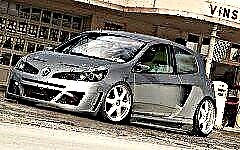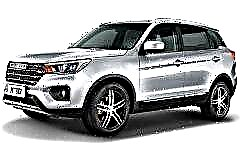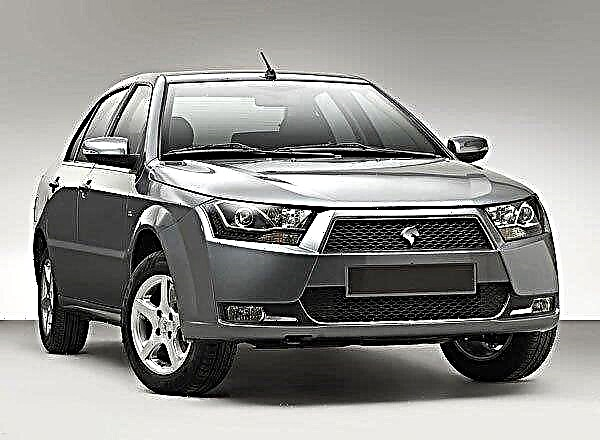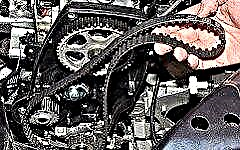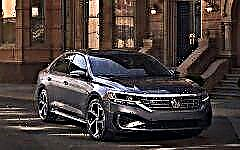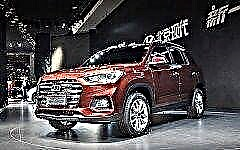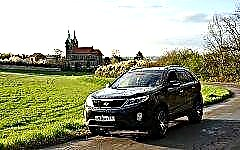

The content of the article:
- What to do before check out
- Way to the Czech border
- Upon arrival in the Czech Republic
The Czech Republic is very popular among Russian tourists, some of whom prefer to get there by private car. This method allows you to be independent of public transport and plan the route yourself, but it requires some preparation and a more careful study of Czech laws. What do you need to keep in mind when traveling to the Czech Republic with your own car?
What to do before check out

Apply for a Schengen visa at the Czech embassy or visa center
The difference between the two organizations, by and large, is only in the applicant's money and time costs. For an appointment at the embassy, you must first register on the website, and then stand in line at the entrance to the building. There is no need to pre-register at visa centers, instead, the service is carried out on a first-come, first-served basis, and in addition to issuing visas, there are also additional services such as travel insurance and delivery of ready-made documents. The term for consideration of applications in the visa center is 3 or 5 working days, depending on the price.
You can use a Schengen visa to enter any country of the agreement, but you need to get it at the representative office of the state where you plan to stay the most time.
However, it should be noted that travel inside the Schengen zone is free and there is no total control over tourists and the time of their stay in a particular country.
When applying for a visa from a tourist on his own car, with a high degree of probability, you will need a compiled itinerary, "Green Card" - an international vehicle insurance policy, a vehicle registration certificate and a driver's license (it is best to get an international one beforehand). Everything else is the same as for ordinary travelers, but it is better to clarify by phone or on the website of the nearest visa center.
Equip a car with everything you need to comply with Czech traffic rules
This list includes: a first aid kit, a reflective vest for each of the passengers (it is unacceptable to be without this vest on the routes at any time of the day, so you need to store it in the passenger compartment), an emergency stop sign, a set of spare fuses, lamps for headlights, a jack and a wheel wrench for changing wheels and a spare wheel itself, which does not apply to cars with run-flat tires. This kit is checked by the Czech police and can charge a fine of up to 77 euros if the kit is incomplete.
Up to ten liters of fuel in a canister can be transported to the Czech Republic, which is important for Russian travelers, given that the cost of gasoline in European countries is twice as high as in Russia and Belarus - 1.25 euros per liter 95 (as a rule, the lowest octane number at Czech gas stations) as of May 2018.
You should also remember about the prohibition of the use of "radar detectors", therefore, if such a device is available, it must be turned off or left at home altogether, while the rules for using radar detectors are not yet enshrined in the country's legislation.
Prepare for winter if you travel to the Czech Republic at this time of year
Studded tires are prohibited by the traffic rules of the Czech Republic, therefore the car must be equipped with winter wheels marked with the "M.S" / "M + S" sign and a tread depth of at least 4 millimeters. This is necessary for all vehicles weighing up to 3.5 tons from November to March inclusive with ice or snow on the road.
If the weather is good, the asphalt does not cover ice and snow, then the Czech police will not fine the driver for summer tires.
Way to the Czech border

Between Moscow and Prague a little less than 2,000 kilometers, that is, it will take at least a day to travel, not taking into account stops and passage through the border. Consider the option of crossing the minimum number of borders, that is, the path through Belarus and Poland.
In general, the process of passing the checkpoint at the border should not take more than an hour, especially if you do not transport alcohol and tobacco products, which, with a large volume, are subject to duties on the border with Poland and the Czech Republic.
Belarus can be crossed on the M1 highway, which takes about six or seven hours. When crossing the border, you must pay a transport fee, after which a receipt will be issued, which will be withdrawn upon leaving the country. The fee can be paid at the transport inspection building located near the border. The toll on the highway must be paid only if the vehicle weighs more than 3.5 tons and / or is registered outside the EAEU countries (these include Kazakhstan, Russia, Armenia, Kyrgyzstan, Belarus). The website beltoll.by is used to pay for the fare.
The fee, only ecological, will have to be paid at the Polish border as well - this can be done behind the barrier at the exit from the border checkpoint. It should be said right away that Poland, like Hungary and the Czech Republic, refused to switch to using the single European currency, so it is best to think in advance about exchanging money for the Polish zloty and the Czech crown (you can buy them, for example, in Moscow) or look for exchange offices inside the countries themselves.
Upon arrival in the Czech Republic

Toll roads
When entering the Czech Republic, you need to purchase a vignette required to pay for motorway tolls (which are marked with the appropriate signs "motorway" and "road for cars"). This is a sticker that must be placed on the windshield, after indicating the number of your vehicle in the appropriate field.
According to the rules, it should be located in the lower right corner, be clearly visible outside the car and not interfere with the driver's view. The cost varies depending on the period for which the vignette is purchased - about 12 euros for 10 days and about 17 euros for 30 days.
The vignette consists of two parts, one of which is a control coupon, which Czech law requires to be kept during the entire trip across the country. You can buy it at most gas stations, in special points near the border or in post offices.
Parking

Parking lots are quite expensive in the Czech Republic, so in large cities it makes sense to leave your car at intercepting parking lots (usually located near bus stops or metro, called P + R parking) and explore the city on foot and by public transport.
When paying, it is also possible to purchase a subscription for travel in the metro and other public transport for a day or round trip. In Prague, the cost of parking in such parking lots until 01:00 is 0.7 euros, overnight - 3.9 euros, which is definitely cheaper than parking on city roads in the center. There it can go up to 1.5 euros per hour. There are K + R parking lots near bus stops and metro stations, which are intended for disembarking and picking up passengers, but you cannot leave a car there.
Free parking lots can be found closer to the outskirts of the city. You can park your car for free on weekends or holidays, as well as at night, from 20:00 to 08:00 (applies to all parking zones).
It is important to know about the three parking zones present in Prague:
- Blue - for city residents with parking cards or official vehicles, you can find such a place by the blue lane on the road surface.
- Orange - for all other drivers, limited to three hours of vehicle downtime, indicated by a white stripe on the road and a road sign.
- Purple - mixed parking, which is marked with a white dashed stripe and a sign with a purple line, you can leave a car in such a parking space for a day, but only after payment.
A parking lot not assigned to any zone will be marked with a regular blue sign. All this is true only if there is no sign next to the parking space informing about the special rules for this street - for example, the duration or the interval of parking.
Parking on the yellow lines is prohibited - this color indicates the places for taxis, public transport, etc. The fine for parking in places for disabled people can be up to 80 euros, you will have to pay separately for the services of a tow truck. The “cost” of incorrect parking in other places is three times lower - up to 32 euros.
Parking is paid through the appropriate machines that can be found throughout the city, it is also possible to pay for parking online. Payment verification is carried out according to the vehicle registration number.
Unfortunately, in different Czech cities, parking systems differ from each other, so when entering a new city (or in advance when planning a route), you should look on the Internet for information about a specific settlement. On the websites of large cities, you can also find a map of parking lots with data on their congestion in real time. You can also use parkme.com, which allows you to find and book parking spaces online in many European cities.
Traffic Laws

In addition to all of the above, it is worth mentioning the permitted speed - 50 km / h within settlements and 90 km / h between them, unless otherwise dictated by road signs.
For highways, a threshold of 130 km / h is set (highways within settlements - 80 km / h), the speed is recorded by automatic devices located along all types of roads.
Another important point is the speed with which the vehicle can drive closer than 50 meters to the railway crossing - 30 km / h. Also, each car must have dipped beam on while driving at any time of the day, the same requirement exists in Poland.
In the Czech Republic, you cannot turn around at an intersection with a traffic light - the fine for such a maneuver will be about 20 euros. The content of any amount of alcohol in the blood is also prohibited, the punishment for its detection will depend on the size per mille - if it is less than 0.3, then you can only get by with a fine of 96 euros, but there is a possibility of deprivation of rights with any amount of alcohol.
Of course, it is also forbidden to use the telephone while driving, the driver and passengers (including those in the rear seats) must be wearing their seat belts. The permissible percentage of light transmission of the windshield and side windows is 75% and 70%, respectively, there are no restrictions on the tint of the rear windows of a car in the Czech Republic.
The payment of the fine, as a rule, is carried out on the spot to the police officers, however, if the violation is so serious that the driver's license is withdrawn and the vehicle is sent to an impound parking lot, then you will have to pay through the court.
Conclusion
The Czech Republic is a fairly comfortable country for traveling by private car, with clear navigation on the roads, developed infrastructure, including intercepting parking lots, online payment services, etc.
Gasoline in the country is inexpensive in comparison with its western neighbors, even if it costs twice as much in comparison with Russia.
Violation of traffic rules is punishable by rather large fines, but preliminary acquaintance with them (the main differences were listed above) will greatly reduce the likelihood of their receipt. We wish you a pleasant journey!



